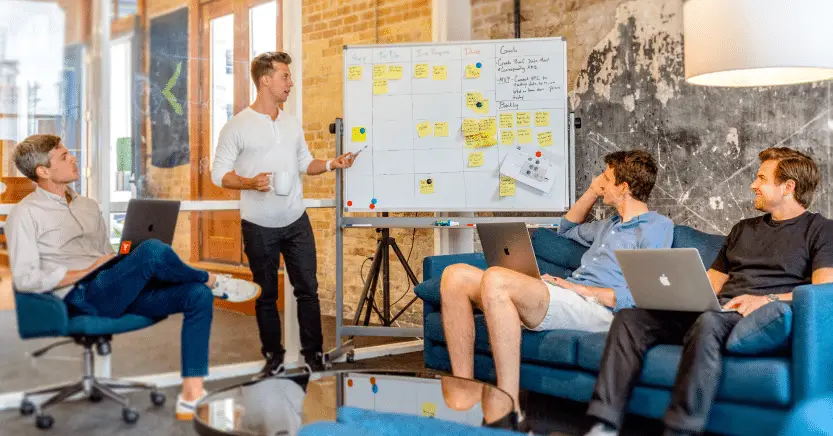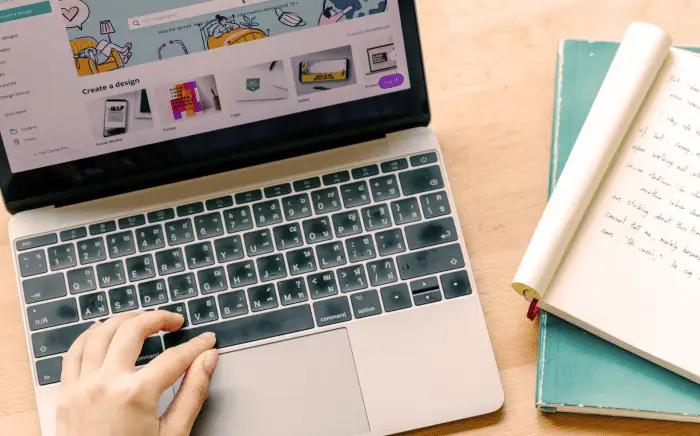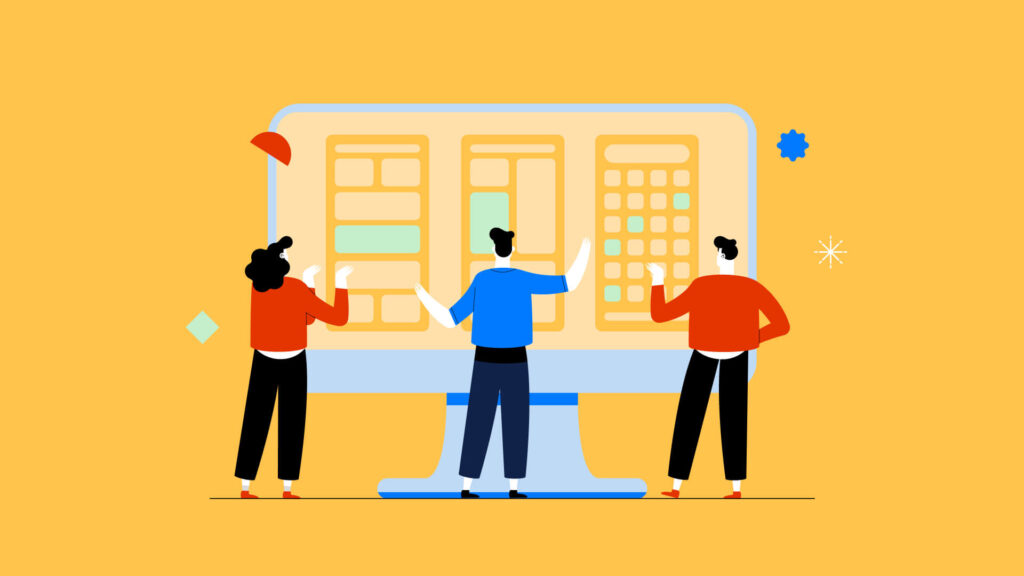In this article, we’re giving you the DOs and DON’Ts of managing design teams, so you can take on your next design challenge without being overwhelmed, and deliver high-quality design work that keeps clients and customers coming back for more.

What does Creative Project Management involve?
Project managers, like you, take on a project in its entirety – a design project in this case – and break it down into manageable, actionable steps.
It takes organization, delegation, and skill. You need to keep designers working together, and keep them motivated and aligned. But it can feel overwhelming when you don’t have a framework in place.
So let’s break it down.

DOs and DON’Ts to keep in mind when managing your next design project
- Do consider the bigger picture (and be realistic)
As soon as a new creative project lands in your lap, plan, plan, and plan some more. Then prioritize your plans.
- What’s the deadline?
- What’s the budget?
- What designers will you need?
- What’s the feedback structure?
- How will drafts and final results be delivered?
Get granular with each and every step before you start involving any designers. And remember, it’s better to underpromise and overdeliver than to overpromise and fall flat to expectation.
- Don’t dive straight in and avoid early challenges
Would you take on flatpack furniture without instructions? Some might, but we all know how that ends up. Frustration, mistakes, and more time than necessary.
Managing design teams is no different..
Tackle any challenges you spot from the beginning and assign room for error, scope changes or unexpected delays.
If your client’s (or colleague’s) expectation is unrealistic, it’s your responsibility to explain why and work together to reach a plan of action that will get you where you need to go.

- Do involve the entire team and delegate efficiently
Good management comes down to clarity, and including all parties helps make that happen across the board.
Make sure each designer you onboard to the project understands the desired outcome, and that your client understands their necessary involvement (or lack thereof) required.
It’s important to know the strengths and weaknesses of your teams and assign tasks accordingly in order to get the best out of your designers. Inspire your designers by handing over tasks you know they can excel at.
- Don’t try to take on everything yourself
You’re here as the Creative Project Manager, not the designer.
Your job is to oversee all of the cogs needed in the machine and keep them turning, not to deliver design work yourself. Don’t be afraid to bring in as many designers as you need to get the work done well, you don’t want to overload your teams – that’s a ticket to burnout.
Don’t have enough designers? Design Force can help.

- Do Make use of project management tools
When design projects require multiple designers, approval stages and assets, digital project management tools are an effective way to keep things on track.
Here at Design Force, we use Monday.com to track progress, changes, and feedback, but there are plenty of tools at your disposal.
Asana, Notion, Trello, Google Drive… each have their own benefits so find what works for you.
- Don’t keep it all in your head
Clear communication is a vital part of management, so don’t keep your ideas, plans and changes in your head.
Regularly check in with your teams and designers to assess how things are going, and be clear in your direction.
It’s important to note that you’re not there to micro-manage either, your designers know how to design. Your role is to oversee, inspire, and pull everything together, so if something is moving away from where it should, don’t be afraid to flag it up.

- Do evaluate, celebrate, and adapt as you go
Your teams deserve to know when they’re doing well, and when they could use some improvement. Be clear and constructive with criticism, but shine a light on excellent work, too.
You may find that scope changes or unexpected challenges arise, and when this happens, be prepared to be flexible on your original plan in order to mitigate delays.
- Don’t keep the blinkers on
Yes, you have an end goal in sight, but are things heading the right way?
Don’t get blind sighted at the thought of the finish line, you could risk missing issues that crop up along the way that could delay the result (and upset your client).
If unavoidable issues do crop up, use the experience to reflect upon and adapt the plan for your next project. We talk more about this, the ‘Polish’ stage, in our 3 P’s to project management success.

- Do consider outsourcing additional support
Outsourcing design work is not a sign of weakness, it’s a sign that you’re working smarter, not harder.
When scope creeps up and internal capacity drops, an external design team like Design Force can make project management, well, more manageable.
We’ll provide you with your own dedicated Design Manager to oversee all of the designers you need. That gives you plenty of space to view the entire project as a whole, and effortlessly communicate updates with your client as and when you need to.
Did we mention you can have our world-class designers on hand in just one day?

- Don’t panic
Lastly, when projects get large or difficult to contain, don’t panic. Take a step back and refer to your initial plan. What can be done to get things back on track? Who can you onboard to relieve some of the pressure?
Keep communication at the forefront and don’t be afraid to take control of the situation to get the results you need.

Want more insight into how you can make creative project management easier to manage? Get in touch with our teams today.



